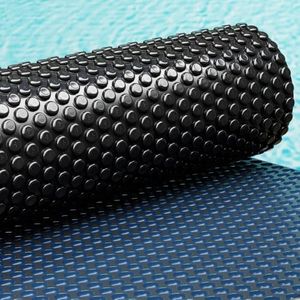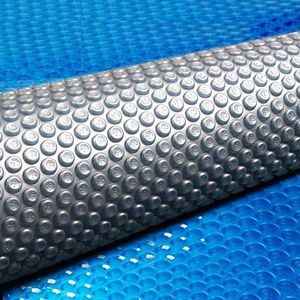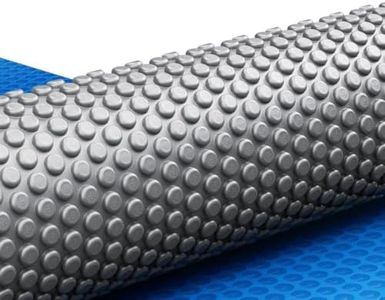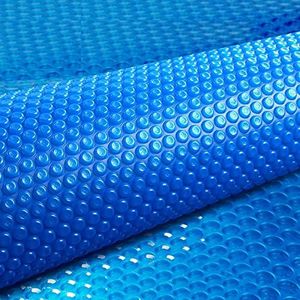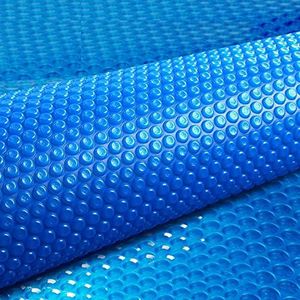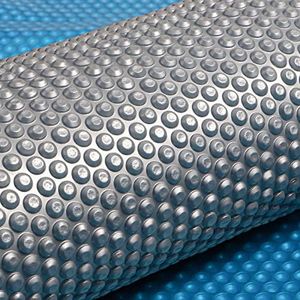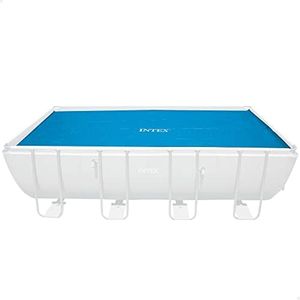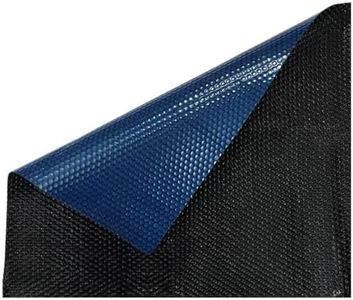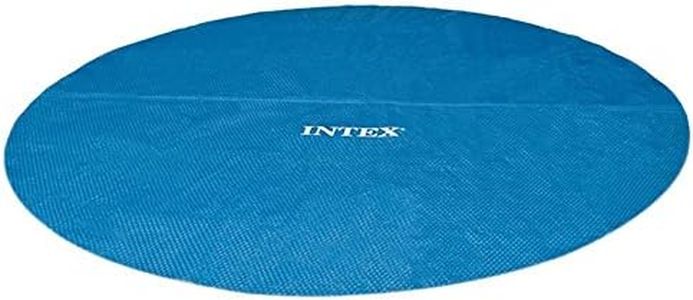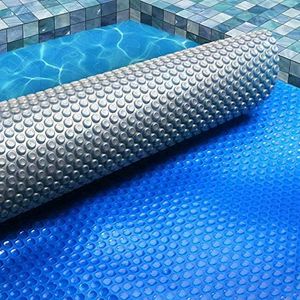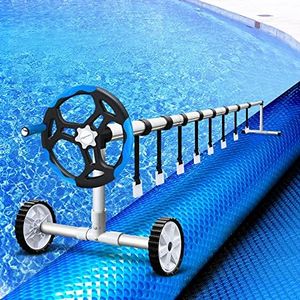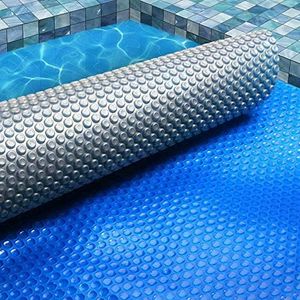We Use CookiesWe use cookies to enhance the security, performance,
functionality and for analytical and promotional activities. By continuing to browse this site you
are agreeing to our privacy policy
10 Best Pool Solar Covers
From leading brands and best sellers available on the web.Buying Guide for the Best Pool Solar Covers
Choosing the right solar cover for your pool is an important step to keep your water warm, reduce evaporation, and save on maintenance. The main goal of a solar cover is to trap heat from the sun and transfer it to your pool water, while also keeping debris out. When selecting a pool solar cover, it’s helpful to understand a few key features and how they fit your particular pool size, climate, and usage habits.Material ThicknessMaterial thickness refers to how thick the cover is, usually measured in millimeters (mm) or mils. Thicker covers tend to be more durable and last longer, offering better heat retention. However, they can also be heavier and more cumbersome to handle. Thinner covers might be lighter and easier to put on and take off, but they may wear out faster and provide less insulation. If you use your pool often and want something easy to manage, a medium thickness is usually a good fit. For harsh climates or to maximize heat retention, go for a thicker option.
Bubble DesignMost solar covers come with a bubble or 'bubble wrap' design. This is not just for looks—the bubbles help trap heat and transfer it into the water. Bigger bubbles might last longer and trap more heat, but they can also make the cover slightly heavier. Smaller bubbles can provide a smoother fit on your pool surface. If your main goal is maximum heat retention and durability, look for covers with larger, sturdier bubbles. If you value flexibility and ease of use, smaller bubbles are a good choice.
UV ResistanceUV resistance is the cover’s ability to withstand sunlight without breaking down. Since your solar cover will spend a lot of time exposed to the sun, good UV resistance means it won’t crack or become brittle quickly. Covers with high UV resistance will last longer and keep performing well. If your pool is in an area with lots of sun exposure, prioritize this feature to ensure the cover doesn’t degrade before its time.
Cover Size and ShapeSolar covers come in various sizes and shapes, often round, oval, or rectangular, to match common pool shapes. A precise fit ensures the best heat retention and evaporation prevention. Some covers can be trimmed to size for an exact fit. To pick the right cover, measure your pool’s dimensions carefully and choose a model that either fits exactly or can be trimmed with scissors at home.
Color and TransparencySolar covers come in different colors—clear, blue, or even darker shades. Clear or lightly colored covers let more sunlight through and heat the water efficiently, while dark covers can help with algae prevention by limiting light penetration but may heat less efficiently. If your priority is maximum heating, go with clear or blue. If controlling algae is a bigger concern, consider darker covers.
Ease of Handling and StorageSome covers are easier to put on, take off, and store than others. Features like lightweight materials, included reels or handles, or flexible designs can make daily use much simpler. If you’re using the pool regularly, look for covers that are easy to move and store, so you won’t find the daily routine a hassle.
